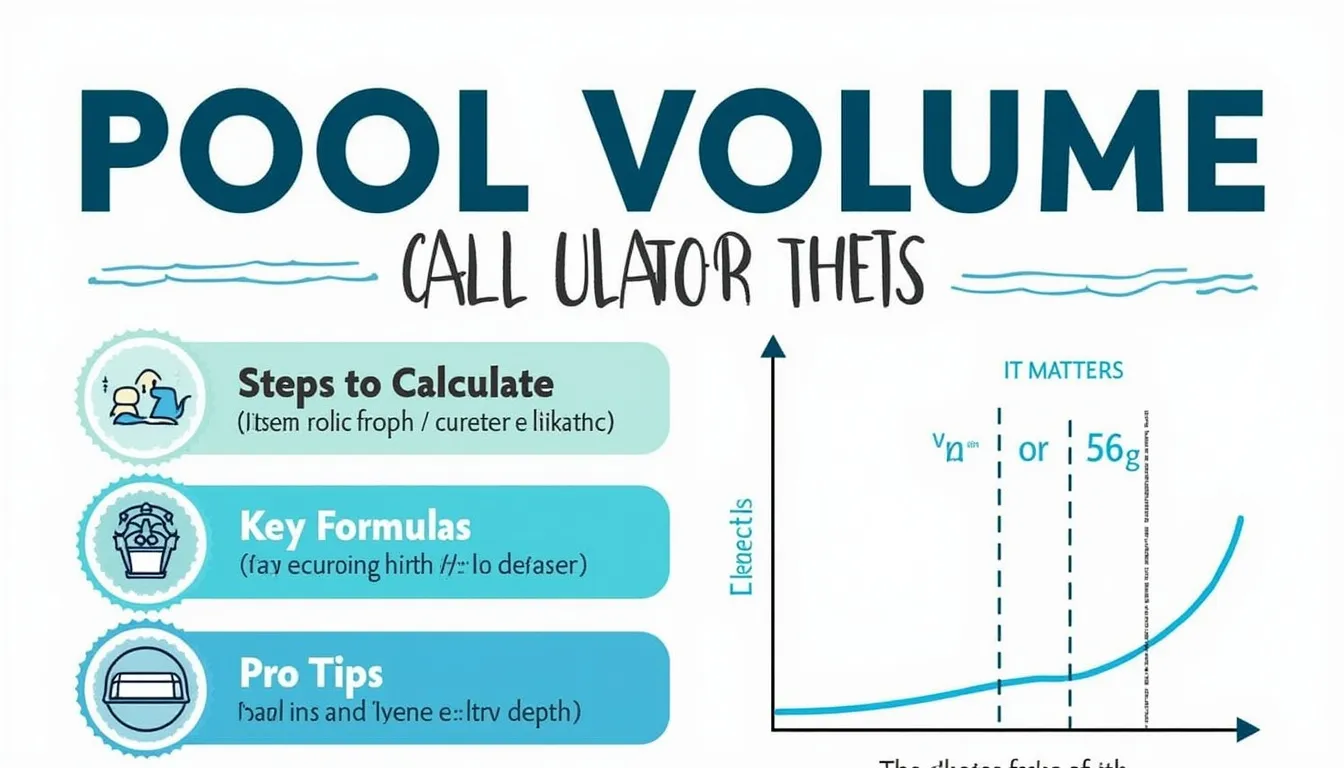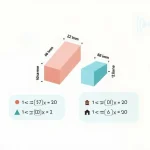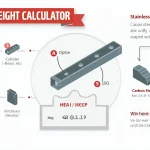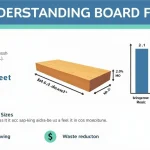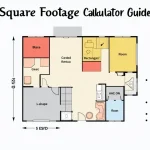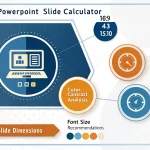Pool Volume Calculator
How to use the tool
Step-by-step
- Enter section data. For each panel choose Flat or Sloped, then add dimensions.
Example A: Flat—Length = 25 ft, Width = 15 ft, Depth = 4 ft.
Example B: Sloped—Length = 30 ft, Width = 15 ft, Start Depth = 3 ft, End Depth = 8 ft. - Add features to subtract water. Type a name (e.g., “Bench”), then its Length = 6 ft, Width = 2 ft, Avg Depth = 1 ft.
- Adjustment for irregularities (gal). Optional: type 250 or 300 if you have curved walls.
- Click “Calculate Pool Volume.” Totals appear in cubic feet and gallons; the tool auto-subtracts features and irregularities.
Formulas used
- Flat section
$$V_{flat}=L\,W\,D$$ - Sloped section
$$D_{avg}= rac{D_{start}+D_{end}}{2}$$ $$V_{sloped}=L\,W\,D_{avg}$$ - Total pool
$$V_{pool}=ΣV_{sections}-ΣV_{features}$$ - Gallons conversion
$$V_{gal}=V_{ft^{3}}\times7.48052$$
Example calculations
- Example A (rectangular): $$25\times15\times4=1500\,ft^{3}$$
Gallons = 1500 × 7.48052 = 11,221 gal. - Example B (sloped): Average depth = (3+8)/2 = 5.5 ft.
Volume = 30 × 15 × 5.5 = 2475 ft³.
Gallons = 2475 × 7.48052 = 18,509 gal.
Quick-Facts
- 1 ft³ = 7.48052 US gal (USGS Water Science School, 2020).
- Residential pools should turn over every 8 h (ANSI/APSP-11, 2022).
- Heating 1 gal 1 °F needs 8.34 BTU (Energy.gov, 2021).
- Free-chlorine target is 1-3 ppm for safety (CDC Model Aquatic Health Code, 2022).
- NSF/ANSI 50 certifies pool filters for flow and hygiene (NSF International, 2023).
FAQ
What measurements do you need?
You need each section’s length, width, and depth; also the start and end depths for slopes (ANSI/APSP-4, 2021).
How do you handle a sloped floor?
The tool averages the shallow and deep depths, then multiplies by length and width for volume.
Why subtract feature volumes?
Stairs, benches, or ledges displace water; subtracting prevents chemical overdosing (CDC, 2022).
Is the 7.48052 conversion factor exact?
Yes, one cubic foot equals 7.48052 US gallons at 39.2 °F (USGS, 2020).
How does volume affect chlorine dosing?
One ppm requires 0.00013 oz chlorine per gallon; exact volume avoids under- or over-chlorination (CDC, 2022).
How can I size a heater from volume?
Multiply gallons by 8.34 BTU for each °F rise, then divide by desired heat-up hours (Energy.gov, 2021).
Can the calculator handle free-form pools?
You break irregular shapes into simple sections and enter each; use the adjustment field for curves.
How often should I recalculate volume?
Re-measure after renovations, liner changes, or feature additions to keep chemical and energy estimates current.
Is this tool helpful?
Important Disclaimer
The calculations, results, and content provided by our tools are not guaranteed to be accurate, complete, or reliable. Users are responsible for verifying and interpreting the results. Our content and tools may contain errors, biases, or inconsistencies. Do not enter personal data, sensitive information, or personally identifiable information in our web forms or tools. Such data entry violates our terms of service and may result in unauthorized disclosure to third parties. We reserve the right to save inputs and outputs from our tools for the purposes of error debugging, bias identification, and performance improvement. External companies providing AI models used in our tools may also save and process data in accordance with their own policies. By using our tools, you consent to this data collection and processing. We reserve the right to limit the usage of our tools based on current usability factors.
